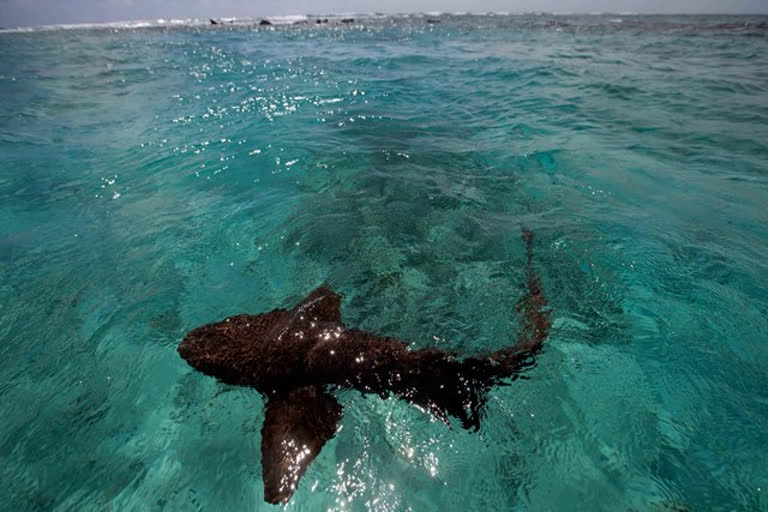Florida: Thousands of blacktip sharks swim close to the south Florida coast during their annual migration.
The beaches are busy with swimmers and paddle boarders, and shark bites can occur. But the sharks pass though these waters every year, mostly without incident.

A team made up of scientists from multiple universities and a not-for-profit foundation, the Angari foundation, takes advantage of the blacktips' migration to study their feeding habits and behavior.
Also Read:Dozens of policemen hurt as tens of thousands protest in Algeria
Angela Rosenberg is the president of the Angari Foundation.
"I have a great respect for them, I'm very fond of them actually," she says.
Stephen Kajiura, a researcher on the team says the migration can occassionally cause problems for swimmers.
"The one time the blacktips do become a problem is if you're in really turbid water, murky water, and you're splashing around on your paddle board or something and it may be difficult in those conditions, low light conditions, for the shark to distinguish a shiny little fish from the palm of your hand, and under those conditions is when people get bitten by these sharks. "
The best way to see the sharks is by drone, which is launched from the boat. An underwater camera also captures images of the blacktips as they swim past.

A vital part of the mission is to catch a shark and tag it, using bait and buoys.
Also Read:US hits Venezuela with sanctions over blocking aid
Mike Heithaus, a researcher on the team, says it's an important part of their study.
"Once we get the shark up, we'll get some really important information," he says.
"We'll take a little clip from its fin, we can use that to study the genetics. Then, we'll get some blood samples. We can use the blood to look at pollutants that might be in the animals or get ideas of what they're feeding on. Then, we're going to put a plastic tag in its fin, so if anyone catches that shark somewhere else we'll know where it started. Finally, for some of the animals we'll actually put computer systems on them that have tracking tags, they have cameras, and then sensors that tell us how fast they're swimming, and a lot about their behavior."

The migration is an important way to research the blacktips and to keep the public safe.



